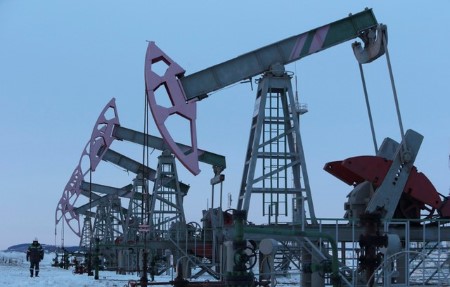




Policy Rate Updates: Double cut finale
 DOWNLOAD
DOWNLOAD

Monthly Economic Update: One for the road
 DOWNLOAD
DOWNLOAD

Inflation Update: Still low, still slow
 DOWNLOAD
DOWNLOAD


Oil tumbles 2% to 3-week low on strong dollar, profit taking

NEW YORK, Oct 2 – Oil prices fell about 2% on Monday to a three-week low as a higher-priced Brent contract expired, the US dollar strengthened and traders took profits, concerned about rising crude supplies and pressure on demand from high interest rates.
On its first day as the front-month, Brent futures for December delivery settled at USD 1.49, or 1.6%, lower at USD 90.71 a barrel, or down about 5% from where the November contract expired on Friday. That was the Brent front-month’s biggest daily percentage decline since early May.
US West Texas Intermediate crude (WTI), meanwhile, fell USD 1.97, or 2.2%, to settle at USD 88.82 per barrel.
Analysts said some traders took profits after crude prices rose nearly 30% to 10-month highs in the third quarter.
Before the crude price pullback that started on Sept. 28, US speculators boosted their net long futures and options positions on the New York Mercantile and Intercontinental Exchanges to the highest since May 2022, according to the US Commodity Futures Trading Commission.
It is “highly likely that profit-taking by speculators is currently playing a role (in the recent price decline) and should cease weighing on markets as the days pass,” analysts at energy consulting firm Gelber and Associates said in a note.
On Monday, the US dollar rose to a 10-month high against a basket of other currencies after the US government avoided a partial shutdown and economic data fuelled expectations the US Federal Reserve will keep rates higher longer, which could slow economic growth.
Higher interest rates along with a stronger dollar, which makes oil more expensive for holders of other currencies, could dent oil demand.
“The global outlook is quickly taking a turn for the worse and that is both driving the king dollar trade again and weighing on the crude demand outlook,” said Edward Moya, senior market analyst at data and analytics firm OANDA, noting that soaring bond yields were also pressuring crude prices.
In Europe, manufacturing data showed the eurozone, Germany, and Britain remained mired in a downturn in September.
In China, the world’s biggest oil importer, the World Bank maintained its forecast for 2023 economic growth at 5.1%, but trimmed its prediction for 2024, citing persistent weakness of its property sector.
MORE OIL COMING
Pumping more crude supply into the system, Turkey’s energy minister said the country will restart operations this week on a pipeline from Iraq that has been suspended for about six months.
Additionally, Saudi Arabia could start to ease its additional voluntary supply cut of 1 million barrels per day (bpd), ING analysts said in a note.
OPEC+, the Organization of the Petroleum Exporting Countries (OPEC) plus Russia and other allies, will meet on Wednesday but is unlikely to tweak its current oil output policy.
A Reuters survey showed OPEC oil output rose for a second straight month in September despite cuts by Saudi Arabia.
(Reporting by Scott DiSavino in New York, Paul Carsten in London, Yuka Obayashi in Tokyo, and Emily Chow; Editing by Marguerita Choy and David Gregorio)
This article originally appeared on reuters.com





 By Reuters
By Reuters